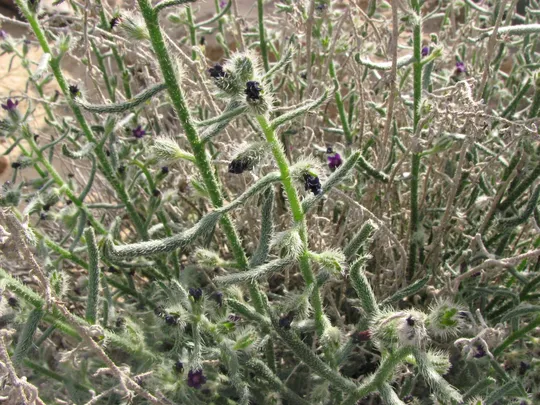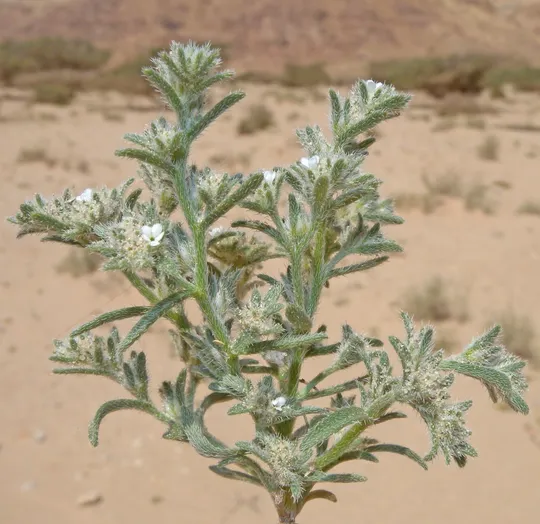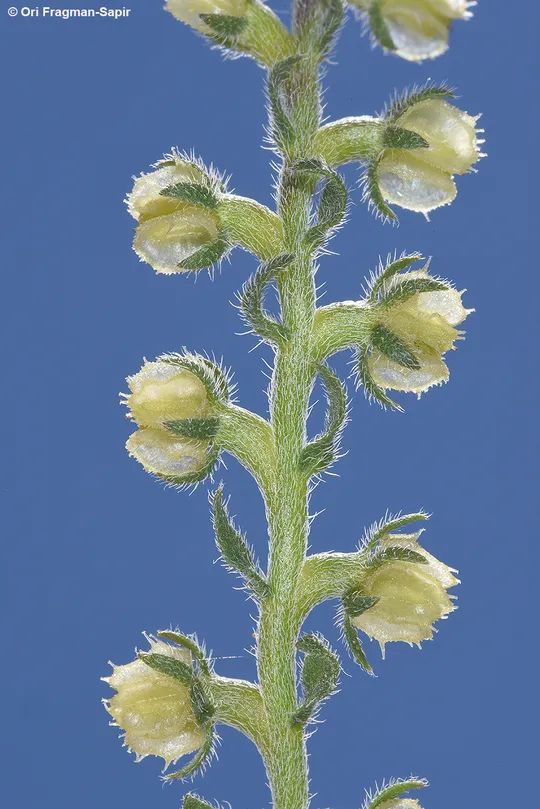Grey-leaved Saucerberry
Cordia sinensis
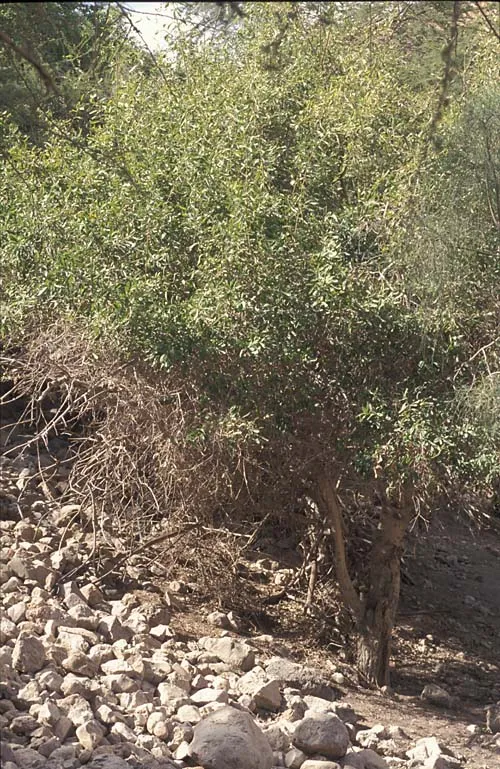
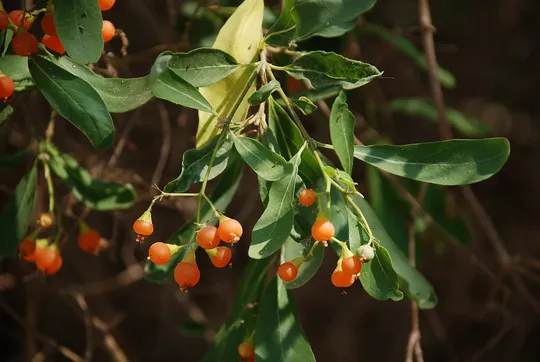
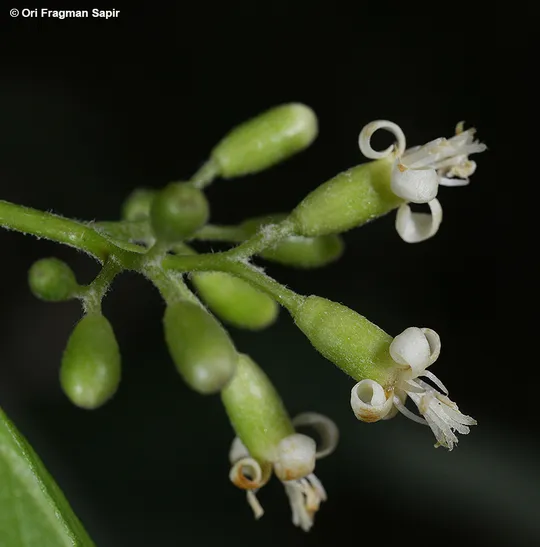
The
fruit of Cordia sinensis is sold for food in Indian markets. Arabs used
to prepare glue from the fruit, which they then applied to branches and sticks
to capture small birds.
Cordia sinensis is found near the Dead Sea at five
sites. In the En Gedi Oasis it is found at three sites and in addition there
are another two isolated sites: the opening of Wadi Tse’elim and En Hamarmar. C.
sinensis was last seen at the last site in 1980 and its
presence there requires verification. Tuvia Kushnir found C. sinensis in
the Klirohi desert oasis east of the Dead Sea and after the Jordan Peace Treaty,
it proved to be the only site in Jordan where it grew; only one tree of the two
trees observed in Klirohi in 1996 still survives. Cordia sinensis
has not been found so far in the area of Elat or in Sinai.
Cordia sinensis is a Sudanese tree growing mainly in
the oasis of En Gedi, where it is abundant on the edge of fields, and on rocky
alluvial terraces in the drying parts of the oasis, on rocky slopes and stream
beds. The trees growing in the stream beds and near water are large and have broad
canopies, while the trees on the slopes and small wadies are small and have sparse
canopies.
The genus Cordia consists of 320 species common
in the tropics and its diversity center is in the Americas. Cordia is
the only tree genus in the Boraginaceae family that typically includes only
herbaceous plants. This is a tropical genus whose species constitute an important
component of the arid African and American savannas. A few of its species are androdioecious,
i.e. each tree has two types of flowers: hermaphroditic and
male.
·
Cordia sinensis
is found in the Dead Sea area at the same sites where it formerly grew, but
probably due to the exploitation of water in the En Gedi Oasis and its partial desiccation,
there is a decrease in the number of plants and the condition of many trees is
not good.
·
The buffer area
of the En Gedi date palm groves is the main area for ensuring the future of C.
sinensis in Israel. It should be noted that individual
trees were recently planted on the slope of En Gedi, by a Nature and Parks
Authority team headed by Michael Blecher (Blecher, 2010), as part of the C.
sinensis reintroduction project.
·
C. sinensis
is protected by law and preserved in the En Gedi Nature Reserve. En Gedi is
significant as the northernmost point of the species range, as a shelter and as
a particularly large propagation nucleus, due to the danger of extinction threatening
the lone tree growing in Klirohi in Jordan.
·
C. sinensis
has a broad Sudano-Decanian distribution and is not globally endangered.
A proper water
supply should be maintained for the natural vegetation at En
Gedi. Cordia sinensis is recommended
and suitable for use in gardening in the Dead Sea region from the original
source trees in the En Gedi Nature Reserve.
Cordia sinensis
has an extensive Sudano-Decanian distribution, from Senegal in West Africa
through Sudan, Egypt, Saudi Arabia, and Pakistan to the island of Sri Lanka.
The "Mazra'ah" site in Jordan on the east side of the Dead Sea – is
historical Klirohi, the northernmost site in the world for the species, and it
is located at a more northerly latitude than En Gedi.
Cordia sinensis is a Sudanese
tree of oases in the Dead Sea region.
Its distribution is limited to only one region at a small number of
sites. It is a peripheral species whose northern distribution limit is at En
Gedi in Israel and in Klirohi in Jordan. C. sinensis is protected by law
in Israel and protected within the boundaries of the En Gedi Nature Reserve. It
is not globally endangered.
שמידע, א. ואור, י. 1983. הצמחיה הסודנית בישראל. רתם 8: 87-88.
בלכר, מ. 2010. המשימה: השבת עצי עין גדי. בשביל הארץ 36: 26-28.
Current Occupancy Map
| 1000 squre meter pixel | 5000 squre meter pixel | 10000 squre meter pixel | |
|---|---|---|---|
| number of observations | 0 | 0 | 0 |
| in total pixels | 0 | 0 | 0 |
| Family | Boraginaceae |
| Classification | On the endangered species list |
| Ecosystem | Desert |
| Chorotype | Sudanian - Tropical |
| Conservation Site | En Gedi |
| Rarity |
1
4
6
|
|---|---|
| Vulnerability |
0
2
4
|
| Attractiveness |
0
1
4
|
| Endemism |
0
0
4
|
| Red number |
1
4.2
10
|
| Peripherality | S |
| IUCN category | DD EW EX LC CR EN VU NT |
| Threat Definition according to the red book | Endangered |
 Based on:
Based on:
